 By Pepper Parr By Pepper Parr
March 3rd, 2024
BURLINGTON, ON
The Ontario Trillium Foundation advises that: The $615K grant was a Grow grant which are typically have terms of up to 3 years. The other 2 grants were Resilient Community Fund grants which had terms of 1 year and a maximum request amount of $150K.
OTF does not accept MPP letters of support nor are MPPs required to support grant applications.
Council will hear a request from BurlingtonGreen this week for an annual fee from the city for services they provide.
The Staff recommendation is to approve one time funding for 2024 in the maximum amount of $50,000 from the Tax Rate Stabilization Reserve Fund as a fee for services provided by BurlingtonGreen.
Direct the Executive Director of Environment, Infrastructure and Community Services to execute a Memorandum of Understanding between the City and BurlingtonGreen outlining the services to be provided in 2024, including performance measures in a form satisfactory to the Executive Director of Legal Services and Corporation Counsel; and
Consider an ongoing fee for services approach with BurlingtonGreen in the amount of $50,000 per calendar year during the Mayor’s 2025 budget process the period of 2024 – 2027.
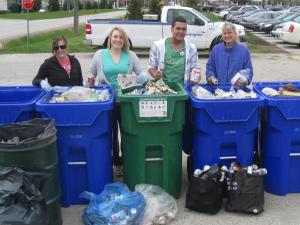 This is where the rubber hits the road for the BurlingtonGreen people. CleanUp-GrenUp In 2023, BurlingtonGreen received $70,000 under the Recreation, Community and Culture’s Community Development program to deliver programs which support the City’s strategic directions related to sustainable transportation, urban nature priorities, climate change actions and zero waste.
The unfortunate part of the Staff report before City council this week is that there is no mention of the $ 773, 500. BurlingtonGreen has received from the provincial Ontario Trillium Foundation (OTF) that distributes profits from the lotteries.
Ontario Trillium Foundation Community Investments
Amount awarded$615,300.00
Year2017-2018
Delivering a project that builds on the success of a proven model or program with a $615,300 grant over 36 months to increase the number of people volunteering in community eco-action activities. Encouraging people to support a healthy and sustainable environment, this initiative is helping people and resource users take deliberate actions to benefit the environment, and has an impact on the lives of 6,300 people in the community.
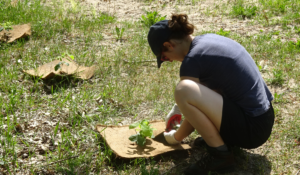 In Burlington activities like this are part of the right of passage; an experience that stays with younger people forever. Ontario Trillium Foundation Resilient Communities Fund
Amount awarded$78,400
Year2021-2022
Our organization, with a $78,400 Resilient Communities Fund grant over 12 months, will rebuild and recover from impacts of COVID-19 by engaging staff to create new, inclusive and safe volunteer opportunities, attract more diverse volunteer participation, and implement new volunteer fundraising strategies.
Ontario Trillium Foundation Resilient Communities Fund
Amount awarded $79,800
Year2023-2024
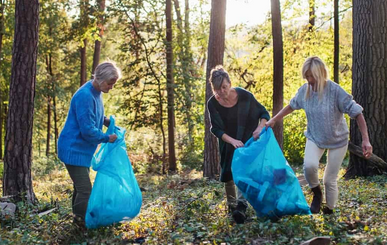 Three generation Clean Up crew – an annual event that draws thousands. From 2017 through to 2023/24 BurlingtonGreen has received $773,500.00 from different OTF programs that are financed by the proceeds from the different lottery programs.
BurlingtonGreen has been operating in the community since 2007 and has a long history of partnering with the City. They took over the annual community Clean Up event from the City in 2011 (formerly organized by the Mayor’s office) and significantly increased participation as it has evolved into the annual Clean-up Green-up event, running over several months instead of just one week around Earth Day.


Forestry staff and BurlingtonGreen have partnered on several occasions to deliver tree planting, give aways and educational events. The City entered into a funding agreement with BG in 2021/22 to complete the community based Electric Mobility Strategy presented to Council in September 2022 (fifty percent of funding was provided by the provincial Ministry of Energy).
 The Pump House that once brought in water from the lake to meet the city’s needs and is now used by BurlingtonGreen as an EcoHub. No word on how long a lease was signed or the rental rate. In 2022, BG successfully made arrangements with the City to lease the Burlington pump house located on the Beachway. They transformed it into a community Eco Hub where they present climate related programs and actions, such as:
- Home energy retrofits showcasing the air source heat pump installed at the Eco Hub;
- Active and sustainable transportation given the location on the multi-use trail along with bike parking and a bike repair station; and
- Electric mobility with the soon to be installed electric vehicle charging
The fee for services approach will help to supplement external funding and provide additional support for staff and resources allowing BurlingtonGreen to attract volunteers, develop and coordinate communications and successfully deliver activities noted above.
BurlingtonGreen has made a huge difference to the public perception of environmental issues. Their reach starts with students at the elementary level through to grandparents. The corporate sector is very comfortable and readily identifies with the group.
But there is a bigger question here that does not get raised in the Staff report – at what point does the City pick up all the costs of this organization.
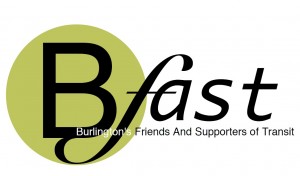 There are other community organizations that deliver services to the community at no cost. The work done by Bfast has resulted in transit services that meet the needs of that part of the population that depends on public transit. There are other community organizations that deliver services to the community at no cost. The work done by Bfast has resulted in transit services that meet the needs of that part of the population that depends on public transit.
 A neighbourhood tradition in Burlington – not a dime of public money. The Food Banks provide services without financial support from the city.
The matter before Council should not be: does the City keep providing and increasing ongoing financial support but rather at what point do taxpayer dollars get used to support community groups. There is a policy the city does not appear to be adhering to.
There is absolutely nothing in the Staff report on the BurlingtonGreen financials; how much they raise and what it gets spent on.
BurlingonGreen has an impressive public profile; it has close to Holy Grail status. Its reach within the community is both admirable and far reaching – the questions is how far should it be reaching into the public purse.
The 3711 taxpayers who signed a petition against the 7.5% 2024 tax increase have to be taken into consideration – their voice is as valid as the BurlingtonGreen supporters.
 Past due property tax at the highest level in 5 years.  Transparency and accountability launched a political career. Missing anywhere in the Staff report are the two pillars that said to be critical to what gets done with public money: transparency and accountability – a special interest group doesn’t use the words and City Council appears to be taking a pass on them as well.
We will return tomorrow with detail on what BurlingtonGreen has done in terms of its own fund raising and how it spends the funds it receives. And we will look at that policy as well.

 By Staff By Staff
January 28th, 2024
BURLINGTON, ON
The number of Canadians ending their lives through medically assisted death (MAID) has grown at a speed that outpaces every other nation in the world.
The Investigative Journalism Bureau, a non-profit newsroom based at the Dalla Lana School of Public Health and the Toronto Star report that assisted deaths accounted for four per cent of all deaths in Canada in 2022 — up from one per cent in 2017, the first full year the legislation was in place. The number of MAID deaths quadrupled during that time. In 2022, the total number hit 13,000 nationwide — a 31 per cent jump from the previous year.
As Canada is poised to expand eligibility criteria under medical assistance in dying (MAID) legislation, data from all 11 countries where the controversial end-of-life treatment exists shows Canada is the fastest-growing adopter in history, an analysis by the Investigative Journalism Bureau and the Toronto Star has found.
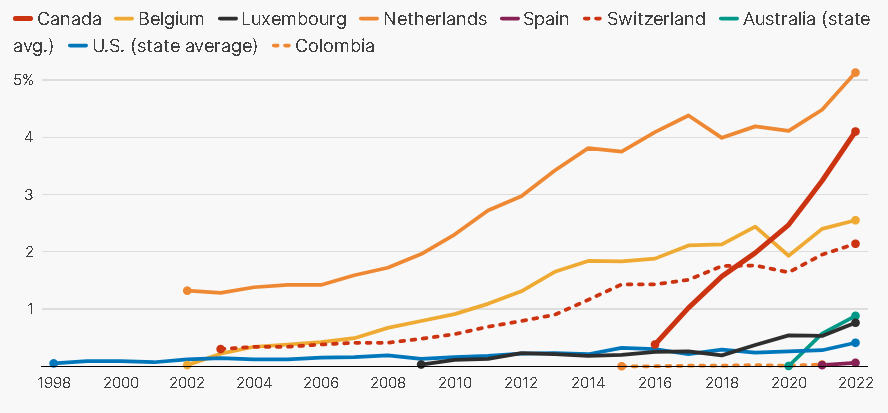
Some experts see the rapid growth as a human rights triumph that allows Canadians to make their own choice about when they wish to die with the full support of the state and their doctors. Others fear that failures in the health-care system and social safety net may be contributing to the surge.
“It’s kind of like my mind’s little Holy Grail,” he said of the government’s promise of accessing a physician-assisted death. “I’ve always been living my life with one foot out the door.”
 Jeff Kirby, Dalhousie University The Toronto Star reported that “Jeff Kirby, a professor emeritus in the department of bioethics at Dalhousie University in Halifax, was a member of the federal expert panel tasked by the government in 2021 with drafting safeguards for the expansion of MAID into mental health.
“While he isn’t opposed to the idea, he stepped down from the panel prior to its final report in May 2022, saying safeguards suggested by experts ought to be legally entrenched rather than simply guidance.
“He remains fearful that the new rules welcoming mental health patients to seek MAID lack the rigour and protection to prevent tragedy.
“I really think that Canada as a whole will have lost if it proceeds to March 2024 with no changes,” he says. “I think we have lost a chance to adequately protect members of vulnerable, disadvantaged social groups in a way that we should have.”
Related video:
Senate hearings on MAID

 By Staff By Staff
January 16th, 2024
BURLINGTON, ON
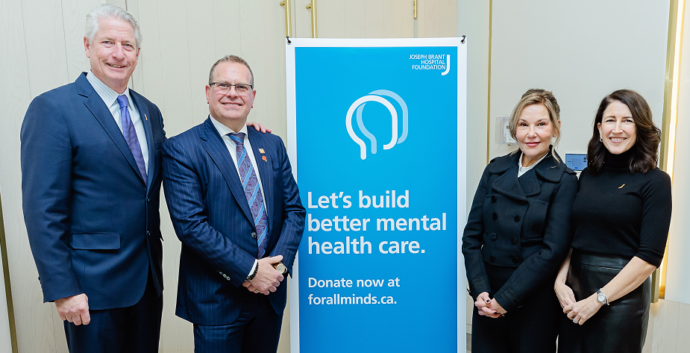 From left to right: Joseph Brant Hospital CEO Eric Vandewall, Michael Paletta, Laura Paletta and Anissa Hilborn, Joseph Brant Hospital Foundation President & CEO. “Our family has felt firsthand the impact of mental illness, and understands the value of innovative and lifesaving care,” said Michael. “Laura and I firmly believe that this campaign has the ability to transform lives and help make Joseph Brant Hospital a world-class provider of mental health and addictions care right here in Burlington.”
This gift recognizes an urgent and growing need to redevelop JBH’s Mental Health and Addictions (MHA) program space to create therapeutic facilities that ensure a dignified, respectful, person-centred experience.
The three core elements of the redevelopment project include a relocation and expansion of the Inpatient Mental Health and Addictions Unit with the addition of a Psychiatric Intensive Care Unit (PICU), a relocation of some of the Outpatient Mental Health Unit, and the addition of a new Child and Youth Mental Health Day Hospital.
“We are truly honoured and grateful to have received this gift. Michael and Laura’s support, passion and commitment to improving mental health and addictions care in our community is inspiring,” said Anissa Hilborn, Joseph Brant Hospital Foundation President & CEO. “In recognition of this transformational gift, once complete the new unit will be named the Michael & Laura Paletta Mental Health & Addictions Unit.”
Mental illness affects all Canadians at some time either through their own experience, or that of a family member, friend or colleague. In any given year, 1 in 5 people in Canada will personally experience a mental health illness, and by age 40, about 50% of the population will have had or being living with a mental illness.
JBH has a vision to build a modern, person-centred facility that is purposefully designed to instill hope and support healing, and that is consistent with the program philosophy to provide the safest and most dignified care to patients.

 By Maria Gregory By Maria Gregory
December 26th, 2023
BURLINGTON, ON
The quest for a smoke-free lifestyle is one that many have embarked on in recent years, with an ever-growing array of options for those looking to steer clear of traditional tobacco. Here in Burlington, we’re noticing a trend of adults turning toward assorted smokeless products, which bring a completely different experience to the table. This shift isn’t just about moving away from smoking; it’s about embracing new ways to enjoy nicotine responsibly, like the discreet zyn pouches, which neatly fit into this modern narrative with their tobacco-free contents.
Gathering without the smoke in our community
 Spencer Smith Park overlooking Lake Ontario Imagine this: you’re walking through Spencer Smith Park, the air is crisp, and the lake shimmers without a haze of cigarette smoke tainting the view. It’s becoming reality as more residents in our community are choosing smokeless alternatives. These choices aren’t just individual preferences; they carry a collective benefit, enhancing the calmness and cleanliness of our local hangouts. Stories of smokers turning a new leaf are not uncommon—conversations about health kickstarts at coffee shops, or friends swearing by their new tobacco-free routines at backyard barbecues. They’re part of a larger narrative where people no longer have to step away to enjoy nicotine, and they’re doing so with a keen awareness of their surroundings.
Fresh air and cleaner choices
Opting for tobacco-free alternatives like oral nicotine pouches isn’t just a personal health decision; it’s a choice that resonates with the wider push for environmental sustainability. Without the need to light up, these pouches contribute to cleaner air and reduce the litter of cigarette butts—both significant concerns in our urban spaces. For Burlington, a city that prides itself on its beautiful parks and green initiatives, such choices are more than just a nod to personal well-being; they’re a commitment to maintaining the pristine quality of our shared natural environments.
A taste of innovation in nicotine enjoyment
 The smell of food being cooked outdoors and the only smoke comes from the BBQ Flavors matter, especially when it comes to something you taste multiple times a day. The variety of tastes available in tobacco-free options could be seen as a buffet of sensory experiences, each designed to cater to a distinct preference. From refreshing mint to savory coffee, these flavors are key in supporting people’s transition away from smoking. They contribute significantly to the enjoyment factor—providing an indulgent experience minus the smoke.
Supporting cessation with modern alternatives
Traditional methods for quitting smoking have been challenged by innovative products that offer a myriad of strengths and flavors to ease the process. Accessibility is crucial—as essential as the support systems and community programs aimed at cessation. We hear stories around town of locals who’ve replaced their pack-a-day habit with convenient, clean, and discreet pouches, and their pride in this achievement is palpable. The availability of a less harmful option is a game-changer, not just for the individuals making the switch but for the whole Burlington community as it moves towards a smoke-free future.

 By Pepper Parr By Pepper Parr
December 20th, 2023
BURLINGTON, ON
A couple more days and we can put our feet up, relax knowing that we have done everything we could to prepare for the holidays.
The younger children will be excited, close to unable to wait for Christmas day
The Burlington Library has expanded their seasonal offering from books and videos to some advice on how to handle the holidays. Keep it in mind when you are thinking about others in the days ahead.
Let’s face it. Despite the twinkling lights, peppermint drinks, and supercharged cheerfulness, this time of year can be tough to cope with—especially if you feel alone. During the pandemic lockdowns, we embraced changes such as takeout meals, online shopping, streaming movies, and reading eBooks. These are now conveniences that keep us comfortably at home. But as a result of having fewer interactions or meaningful connections with others, loneliness is on the rise.
 This person is just a phone call away. Last month, the World Health Organization announced loneliness and social isolation may soon reach epidemic proportions. They identified serious health risks linked to loneliness, such as dementia, stroke, and heart disease. But along with this dire news, the WHO’s leading health experts also suggested a simple prescription to combat loneliness—getting in touch with others by phone, online, and in-person; doing things you enjoy; and reaching out to local services that can connect you with others.
Connect With Others in a Third Place
Your local public library is a great place to start.
Last year, Burlington Public Library took part in a research project based out of McMaster University about how libraries can support connections and successful aging. This ongoing project explores the role public libraries play in strengthening social inclusion for older adults in the community. While this study focuses on older adults, the library offers opportunities for connection to people of all ages.
“We want everyone to feel welcome and included when they visit Burlington Public Library in person and online,” says David Quezada, Manager of Equity, Diversity, and Inclusion at Burlington Public Library (BPL). “We care deeply about providing an accessible communal space for all.”
Libraries are sometimes called a “third place.” This sociology term refers to familiar and welcoming surroundings separate from the two places where most people spend most of their time—work and home. Spending time in a “third place” can increase your social connections and sense of belonging.
Whether visiting for a few minutes or lingering for hours—you’re always welcome at Burlington Public Library. Pop in to chat with staff while you browse the displays. Or, if you’re looking to socialize and meet people with similar interests, perhaps you’d enjoy attending an interactive program such as Knit ‘n’ Natter or BPL Book Club. And don’t forget about the library’s comfy seats where you can read newspapers and magazines in a friendly space away from home.
Get the Jump on Seasonal Affective Disorder
The Library also offers a chance to brighten up your day, quite literally. A form of depression called Seasonal Affective Disorder (SAD) may cause changes in your feeling of well-being during the late fall and winter months when daylight hours are shorter.
If you’re experiencing mild, temporary “winter blues,” increasing your exposure to natural or artificial daylight can help reduce seasonal doldrums. Come into BPL’s branches for a mood boost under a light therapy floor lamp. The Library offers these at all locations except for Kilbride. The lamp’s bright UV-filtered light mimics natural sunlight. (Sorry, tropical heat is not included!)
Talk to Local Support Services
While simply getting out of the house can be enough to kick a mild case of loneliness, some folks need more support.
If you’re not sure where to turn, caring library staff can refer you to people and places in the community that can support you. You can call 905.639.3611 during library open hours to speak to a staff member or reach out by email to infoburlington@bpl.on.ca.
 Is this leading by example? “Connecting people with community resources is an important part of what we do at the library,” says Quezada. “We can provide guidance to help you find the services you need.”
The Library also hosts free drop-in sessions where you can talk to specialists from local support organizations.
You Have a Friendly Face to Turn To
The Library is open every day, except statutory holidays so you always have somewhere to turn. If you’re ever feeling lonely, know that you can find a friendly face and a warm hello at your local library.
People who need a helping hand often don’t know how to reach out.
Those who have a supporting family and a great circle of friends have the most to give – reach out and invite people to share what you have.

 By Staff By Staff
December 19th, 2023
BURLINGTON, ON
When a $30,000 donation to local food banks is announced – people listen. This donation represents Sylvite’s third consecutive year helping communities meet the challenges they face.
The donation will be distributed directly to the communities where Sylvite operates. Each branch will select preferred local food banks, guaranteeing that the contribution directly supports neighbors in need.
 In 1983, Hugh Loomans, B.S.A. ’76, purchased Sylvite, a fertilizer distribution business focused primarily on agricultural products, from Alex Henry and Don Rutherford OAC ‘51. Today the company has four divisions: agri services for direct to farmer sales; wholesale agricultural supply; transportation and logistic services across North America; and an industrial chemical division. Now Cassandra is shadowing her father in his role as Sylvite President and CEO. Hugh Loomans, President and CEO of Sylvite, expressed the company’s dedication to making a meaningful impact, sharing, “in our role within the agriculture supply chain, we believe it’s our responsibility to help feed the communities we serve. Supporting the 15 communities where we operate is not just a duty—it’s a privilege. And by doing so, we’re planting seeds for a stronger, more resilient community.”
Sylvite is in the business of transporting, warehousing and distribution for the agriculture supply chain.
 Sylvite warehouse on Corporate Drive “In a year that saw a 40% rise in visits to Hamilton food banks, with an astonishing 34% of users being completely new to the emergency food network, the demand for assistance can’t be ignored,” highlights Radhika Subramanyan, CEO of Hamilton Food Share. “As we observe a growing need to provide for families in Hamilton, contributions like Sylvite’s are essential—they enhance our capacity, allowing us to meet these challenges head-on.”
Emphasizing the vital role of local food banks, Robin Bailey, Executive Director of the Burlington Food Bank, stressed, “As the need for food support continues to rise, it’s essential for local businesses to take action. Even full-time, employed families are grappling with providing the basics. Sylvite’s continued support is rooted in the understanding that every contribution plays a vital role in ensuring food security for those encountering difficulties in our communities.”
Sylvite continues to uphold its commitment to the belief that collaborative efforts are vital for fostering positive change within the communities where we operate.

 By Darren Burke By Darren Burke
December 1st, 2023
BURLINGTON, ON
A distinguished scientist and serial entrepreneur, is set to disrupt the world of sports science and nutrition with an innovative new AI software called VITAI. This cutting-edge technology promises to mimic human clinical trials research, predict outcomes, and transform the way individuals approach the marketing and use of dietary supplements. Dosages and combinations of ingredients can be quickly tested to determine expected results on muscle strength, exercise recovery, hormone levels, weight loss, and more.
 The groundbreaking AI software, developed by Dr. Darren Burke and his team of experts, leverages the power of artificial intelligence, natural language processing (NLP), and machine learning to simulate complex clinical trials scenarios. Phase one developed for athletes, uses human physiological responses to predict how exercise interventions and supplement formulations would impact muscle strength, exercise recovery, hormone levels, weight loss and many more important variables. The groundbreaking AI software, developed by Dr. Darren Burke and his team of experts, leverages the power of artificial intelligence, natural language processing (NLP), and machine learning to simulate complex clinical trials scenarios. Phase one developed for athletes, uses human physiological responses to predict how exercise interventions and supplement formulations would impact muscle strength, exercise recovery, hormone levels, weight loss and many more important variables.
Key Features of the AI Software:
Accurate Predictions: The software uses natural language processing (NLP), advanced algorithms and data analytics to provide highly accurate predictions of how different exercise and supplement interventions can affect specific outcomes in athletic populations.
Reduced Trial Costs and Time: By simulating clinical trials in silico, this innovative technology significantly reduces the time and costs associated with traditional human trials, making it more accessible to researchers, coaches, and athletes alike.
Data-Driven Insights: The software generates comprehensive insights and reports, personalized recommendations, enabling researchers and trainers to make data-driven decisions about exercise and supplement regimens.
 The gap between scientific research and practical application is filled by people that look for the bigger picture. These people are called entrepreneurs – they do this every day. Dr. Darren Burke, the mastermind behind this AI powered innovation, is a renowned exercise scientist and serial entrepreneur with a track record of pioneering advancements in the fields of sports science and nutrition. With this AI software, he aims to bridge the gap between scientific research and practical application, enabling athletes and fitness enthusiasts to optimize their performance and well-being, and most importantly make the right decisions with supplement purchases and usage.
“I am excited to introduce this game-changing AI software that will revolutionize the way we approach exercise, nutrition, and performance enhancement,” said Dr. Burke. “By providing a precise understanding of how various interventions impact the human body, we empower athletes and individuals to make informed choices to achieve their fitness goals efficiently.”
 A well structured and balanced exercise program supplemented by nutrients has proven to be very effective. As an example of the potential usages of this novel technology, Dr Burke and his team are launching the worlds 1st sports nutrition brand built using AI, called CIRCUT. It is a brand built for athletes – beginner, professional and retired and demonstrates the power of their AI to scour millions of peer-reviewed publications on the effect of natural products on athletic performance and build custom formulations to help other achieve similar results. The potential applications of Dr. Burke’s AI software extend beyond athletes to include the general population, and healthcare professionals seeking evidence-based guidance for their clients or patients. This technology promises to drive innovation in the health and wellness industry, offering new avenues for research and improved outcomes for consumers worldwide.
For media inquiries or further information about VITAI click HERE
For more information on Dr. Darren Burke, please contact him via his website at DrDarrenBurke.COM or via LinkedIn.

 By Dara Cruz By Dara Cruz
November 20th, 2023
BURLINGTON, ON
MMA, or Mixed Martial Arts, is a very exciting sport growing in popularity. The sport is a show of force and technique that is usually very fun to watch since it’s like a chess game where the athletes combine martial arts to try to take down the other athlete.
Of course, since MMA is a type of contact sport, it’s not a mystery that injuries are common. After all, it’s a sport where the other athlete tries to render the other athlete through strikes and grapples.
Over the years, we have witnessed countless injuries in the sport, both minor and major. We have even seen multiple deaths in the sport already. However, as brutal as it sounds, it remains one of the most popular fighting sports in today’s generation. That said, what are the most common injuries in MMA?
Head Trauma
 An athlete wanting to knock out an opponent, usually goes for the head. This is perhaps the scariest type of injury in any fighting sport. As scary as it sounds, it’s also one of the most common. After all, if an athlete wants to knock out an opponent, they usually go for the head. That said, fighters often take precautions to ensure that their heads are always safe inside the ring to prevent being knocked out and avoid lasting damage that can complicate later in life.
Treatment for this kind of injury is often similar to how other injuries are treated, like surgery. However, the risks involved are often higher since the head is more delicate because it contains the brain. Not only that, but processing head injury is often a lot harder. Sometimes even, the symptoms of brain injury can manifest years later.
Knee Injuries
Knee injuries are common in MMA, especially because many fighting techniques involve using your knee. This is also the reason why a lot of strategies also involve striking it to limit the movement of the opponent. Because of that, a lot of issues can arise to the knee for two reasons: either from use or from being damaged. Some of the most common issues with the knees are the posterior cruciate ligament, or PCL, and the anterior cruciate ligament, or ACL.
Under certain conditions where the damage isn’t severe, the injuries can be treated with a cold compress, physical therapy, and rest. For more severe damages, surgery will be required. On the latter one, problems with usage after the surgery can be attributed, resulting in the knee not being used like normal anymore and, of course, requiring retirement from MMA.
Ankle Sprains
 Ankle sprains, muscle tears, and even fractures are pretty common in Mixed Martial Arts Many fighting styles use kicks, so the legs, thighs, and feet will be used. People usually forget that in these strikes, the ankles also get impacted, which can be damaged severely. The ankle joint is stabilized by two ligaments both on the outside and the inside. A sprain occurs when one or both muscles get torn or outstretched.
That said, ankle sprains, muscle tears, and even fractures are pretty common in MMA. This usually happens when the athlete lands wrongly on the ground, an awkward twisting motion, or if the other opponent strikes it. The severity of the ankle sprain usually has two levels: Grade I and Grade III. The former involves mild stretching and damage, while the latter results in a complete tearing of the ligament.
Wrist Injuries
Wrist injuries are also pretty common in MMA, mainly because it involves a lot of action, from standing up from the ground to using it for strikes. However, it’s also no mystery that the wrist is one of our bodies’ most easily damaged parts. If you’ve been a long-time fan of the MMA or a long-time bettor of MMA betting odds, there have been cases where a fighter was rendered unable to fight because of a wrist injury.
One of the worst aspects of wrist injuries is how long it takes to heal. Ligaments hold the bones in your wrist, and when your bones break, they also get damaged. This is why it usually takes for the injury to heal for months and even years. The wrist can be treated with first aid or surgery, depending on the severity.
Shoulder Injuries
Mixed martial arts use a lot of hand movement for striking and blocking, which can cause shoulder injuries. Not only that, but some techniques involve manipulating the shoulder joint aggressively to make the opponent tap out. Of course, this can cause damage ranging from simple to severe.
That said, when the shoulder is not given enough time to rest, the tears in the tendon of the rotator cuff can’t repair themselves, weakening the entire shoulder and even making it more prone to damage.
 The sport now includes women. Martial artists can also suffer from slap tears. This type of damage occurs when you tear the inner cartilage of your shoulder joint. This damage tends to result from overuse and injury, making the shoulder experience pain when moving or even movement difficulty.
Toe/Foot Injuries
If you’ve stubbed your toe before, you know how painful it is. Now, imagine if you purposefully use your foot to kick somebody, and of course, your toe would get impacted as well. For the most part, toe and foot injuries are pretty common.
Possibly, the most common are torn toenails. It’s pretty painful, but at this point, it’s par for the course since many fighting styles use kicks. Another common injury is on the big toe. Since it’s the largest toe on your foot, it’s normal to be impacted much forcibly during kicks. Usually, it’s straight-up damage, but sprains on the big toe can also occur.
Final Words
It’s no mystery that MMA is home to the most gnarly injuries. Through the years, we’ve seen many fighters quitting out of the fight and even from their careers because of the injuries they sustained inside the ring. However, the types of injuries above are some of the most common ones you can see in MMA. But even with that, MMA remains to be one of the most popular fighting sports in the world.

 By Staff By Staff
November 16th, 2023
BURLINGTON, ON
 The holidays are a joyful time for many of us. Food is often a cherished part of the season — cooking and baking from family recipes and sharing it with loved ones. The holidays are a joyful time for many of us. Food is often a cherished part of the season — cooking and baking from family recipes and sharing it with loved ones.
Unfortunately, the holidays can be stressful and disappointing for some in our community. We’ve seen our neighbours struggling with rising costs, including rent and food. Some find they need food support for the first time in their lives.
Today, you can increase your impact through an exciting opportunity. When you make a holiday donation to Food for Life, it will be matched up to $100,000 by The Sprott Foundation, doubling its value.
Please don’t delay: for your gift to qualify for this extraordinary match, we must receive it by December 31.
 Food for Life Staff stocking the shelves. Donors and volunteers like you are the backbone of our community. Your support nourishes families and transforms lives with a remarkable return on investment: every $10 donation results in $62.50 of fresh food and groceries being shared. And through this matching offer, you will have 2X the impact!
Your generous gift will make an immediate difference, supporting about 4,000 households each week.
We believe everyone deserves access to nourishing food, regardless of their circumstances. When people are hungry, nothing else matters. It begins with food.
Together, let’s make a lasting difference in the lives of those who need it most. Please share your generous holiday gift today — the sooner it’s received, the sooner it can help more families especially when it is doubled in value by The Sprott Foundation through this special matching offer!

 By Staff By Staff
August 4th, 2023
BURLINGTON, ON
As temperatures continue to rise, Brock University Kinesiology Professor Stephen Cheung is offering insight into how the body responds to heat and steps that can be taken to stay cool through summer’s remaining weeks.
“There is a big danger whenever there is a sudden heat wave,” says Cheung, whose lab studies the impacts of environmental stressors — such as extreme heat and cold — on human physiology and performance. “The week after a sudden spike in hot temperatures, there tends to be more hospital admissions, more heart attacks and, just generally, more deaths that arise because of the heat.”
 Brock University Kinesiology Professor Stephen Cheung (right) and master’s student Johnathan Ljubanovich in a unique chamber at the University’s Environmental Ergonomics Lab that can simulate a wide range of temperatures, humidity and oxygen levels, allowing researchers to measure what happens physiologically when exercising in extreme environments. When the body experiences heat, it reacts in two main ways: blood from deeper parts of the body moves outwards to blood vessels in the skin to help heat leave the body; and sweat is steadily released throughout the body to create a film of water on the skin, which evaporates into the environment and cools the body.
Extreme heat and humidity add challenges to these typically effective ways to rid the body of heat, says Cheung.
If the air temperature is warmer than one’s core body temperature, which ranges on average from 37 to 39 degrees Celsius when exercising, it is more difficult to expel body heat.
“We’re actually gaining heat from the environment, in addition to the heat we are generating through exercise,” he says. “That’s a very dangerous situation that can rapidly lead to heat exhaustion, hyperthermia and heat stroke.”
Another challenge is high humidity levels.
“In a humid environment, the air is already very saturated with water so it can’t suck up the sweat from our body,” Cheung says. “We can be sweating a lot, but we’re not actually removing heat from our body — we’re just dripping the sweat off our bodies, making us very uncomfortable and making us more dehydrated more quickly.”
Dehydration often leads to the heart working harder, so it can be especially dangerous for people with cardiovascular issues.
Extreme heat can also be challenging for older individuals who may not be able to control and regulate their body temperatures well, and for people who work outside, such as construction workers near hot surfaces that retain heat from the sun.
In addition to changes experienced by the skin, blood vessels and heart, extreme heat also affects the brain.
 Outdoor air conditioning. “When we’re hot, there tends to be less blood flowing to the brain and that can affect our mental capabilities also, so it’s not just a matter of us physically collapsing from the heat,” says Cheung. “If you’re a worker, you can be at higher risk of accidents due to unsafe behaviour. You’re often so focused on your own discomfort that you may not be paying attention to the outside environment.”
Cheung says climate change has led to more days in the year that are too hot and unsafe for work to occur outside.
“That’s already the case in many parts of the world and closer to the equator,” he says. “For example, Singapore and the Middle East are already experiencing reduced productivity because it’s just too hot to work during the day.”
Extreme heat can also be detrimental to people who do not have access to air conditioning in their homes due to lower socioeconomic status or the location of their living quarters. Apartments and condos on the upper floors of buildings can trap heat, making it uncomfortable even in the evenings and at night when trying to sleep, Cheung says.
Tips for staying safe in extreme heat:
• Stay in the shade.
• Wear sunscreen.
• Stay hydrated.
• Head inside to air conditioning.
• Remove layers of clothing.
• Check on older relatives and others who may be more susceptible to heat’s impacts.

 By Pepper Parr By Pepper Parr
June 29th, 2023
BURLINGTON, ON
Creating the image and the message you want your market to have is an art more than it is a science.
In Burlington, many business operators will give a portion of their profits to a local charity. Car dealerships will loan a vehicle to an organization and have their name well displayed on the vehicle.
Alinea , the largest developable land owner in the Region, was formed when the Paletta brothers found that they didn’t see the world the way they used to when their father was alive and decided to distribute the significant assets between them and each go their own way.
Alinea now needs to grow their brand. Paletta as a developer was a little rough at the edges; Alinea wanted to move away from that image. How to tell the story ?.
They found a way to work with the Joseph Brant Hospital Foundation and has offered to match dollar for dollar in their You are more than just a business campaign. It isn’t clear whether the Hospital Foundation pitched the idea to Alinea or Alinea went to the hospital.
Anissa Hilborn, President & CEO of the Foundation has a very good reputation for coming up with innovative and interesting ideas.
 Alinea, wants the public to know they are more than just a developer and wants local commercial interests to tell the public they are more than just a business. It’s an interesting approach and so far well executed. The campaign reaches out to the business community and giving them an opportunity to show they are more than just a business. For every dollar a local business raises Alinea will match it up to $100,000
Alinea is positioning themselves as a different kind of developer. As part of their working relationship with the hospital foundation they are getting their message out.
The sign in the photograph is being installed on the outside of the hospital – we aren’t quite sure where the sign is – we will dig that out.
They produced a video (Link here) telling the story
The message to the business community is: You’re a team of hard-working people who want to help our community thrive. You don’t just do business in Burlington; you live here, you raise your families here, and you know how important local healthcare is. So show your customers, employees and friends that you’re doing more for your community.
The objective is to raise $100K IN 100 DAYS!
 This retailer wants her customers to know that she is supporting the hospital and invites you to join them It’s an innovative approach, well executed so far. Look for the signs participating businesses get to put in their window or lobby.
It is your hospital – you want it to be there when you need it,
On a slightly negative note – the people of Burlington wanted some reaction to a feature article that ran four pages in the Spectator on problems at the hospital. Not a word in the way of response from Eric Vandewall · President & CEO at Joseph Brant Hospital who, apparently, has yet to learn that the way to handle a negative news story is to get in front of it.
Joseph Brant Hospital is more than just a hospital – it is the place you go to when you are seriously ill and you need help. The public needs to trust you.
Related news stories:
Spectator does feature on problems at Joseph Brant Hospital
Alinea is a new name in the development field

June 23, 2023
BURLINGTON, ON

Where in the city of Burlington is a bunch of balloons like this be put on display ?
Not the Catholic School Board.
Lobby of the Joseph Brant Hospital.
Why do two different organizations – both very important to the city – have such different approaches the the PRIDE statement ?

 By Pepper Parr By Pepper Parr
June 16th, 2023
BURLINGTON, ON

This is a story about delegations that were made at city council recently. It was about an epidemic – something the delegations referred to as IPV.
It is a long article – that was edited for brevity.
IPV is intimate partner violence – domestic abuse.
Halton Deputy Police Chief Jeff Hill told Council that police make an arrest a day in Burlington alone.
There were four delegations on the issue.
Jennifer Kagan, a physician and advocate against gender based violence in all its forms, delegated to council on the resolution that proposed Burlington declare intimate partner violence an epidemic in the city. .
 Jennifer Kagan, a physician and advocate against gender based violence. Kagan said “this recommendation stems from the 2022 Renfrew County inquest into the deaths of Carol Collington Anastasia Cusick and Nathalie Warmerdam. (A link to a seperate article on what happened in Renfrew Councty is included at the end of this article.)
“It is something I hear about from women in the Region every single day. Women who fear for their lives and their children’s lives. Women with nowhere to turn because systems that are supposed to protect them are failing. Women who are fearful to engage with many systems because this can often make things worse for them and their children. The numbers are staggering.
“We are seeing an unprecedented increase in the need for domestic violence related services. This has only been exacerbated by the COVID 19 pandemic; this dovetails with my perspective on the ground as an advocate for survivors of violence and with my own experience.
“I was a victim of domestic violence and coercive control in a previous relationship. While I was able to leave the relationship fleeing with only a few essential items, I sought protection for our nine month old daughter, Keira via the courts. Keira was failed by many judges, child protection services and was ultimately killed at the age of four by her father in February 2020.
Dr. Kagan’s experience resulted in the passing of Kiera’s Law
According to the Canadian Femicide Observatory for Justice and Accountability, a woman is killed somewhere in Canada every other day on average; 30 to 40 children a year in Canada are killed by a violent parent.
“One is too many. Those who work with survivors of violence see the impact that lack of resources has on the lives of women and children fleeing violence. I commonly hear from colleagues looking to find shelter space for abused women; they cannot find it and that police cannot meet the unprecedented demand for services.
“By declaring intimate partner violence an epidemic it will ensure the city can better meet the needs of women and children fleeing violence. It will also raise awareness about the scourge of domestic violence so that survivors and children living with violence and escaping violence know that they are not alone. Passing this resolution will save many lives and I am in strong support of it.”
Councillor Nissan asked Dr. Kagan if she had anything “on a wish list for us at the municipal level? W hat are the next steps after this resolution comes forward?
Kagan: “Training is a very large focus of our advocacy. Educating the students and teachers as well would be two items if I could think just off the top of my head.”
 Halton Police Service Deputy Chief Jeff Hill Deputy Chief Jeff Hill of the Halton Police Service spoke virtually regarding the same item saying “I very much wanted to be a part of this discussion and humbly submit is of the utmost importance, and needed desperately to help combat and intimate partner violence.
“I’m going to be concise, and paint the picture from a policing perspective of the surveillance of intimate partner violence in the city of Burlington. Regionally speaking to the rise, in intimate partner violence in 2015 we responded to 2757 calls and laid 1145 charges.
“Last year we responded to 3500 calls and doubled our charges, laying 2141 charges.
“That’s effectively responding to 10 incidents of intimate partner violence a day. Specifically speaking to the city of Burlington, of those 3500 occurrences 1346 of them were in the city of Burlington. Stemming from those occurrences we made 341 arrests; that’s basically an arrest a day.
“As of last week, we have already attended 544 incidents of IPV in Burlington.
“I’ve seen the statistics and I’m aware that this largely an under reported crime. We believe that only 30% is actually reported to us.
“Halton police has a dedicated 24 members, intimate partner violence unit, that partners with such entities as Women’s Place and the mentoring members of the Halton Violence Prevention Council. We’re doing everything we can in the areas of risk intervention, incident response prevention and social disorder, social development. Our Victim Support Unit reaches out to every victim of intimate partner violence that is reported to us. Even with all those resources being dedicated, the number of incidents that we respond to has remained steady since 2020, with a number of arrests rising year after year.
“Let me be clear, however, that the police alone are not the solution to this issue and we will not arrest our way out of this epidemic. If we don’t do something different, the problem will continue to grow. Intimate partner violence cannot be a private issue. We cannot be silent about the violence that is occurring. The resolution before you is a start but we must do something to raise community awareness and education on the surveillance of the issue with the necessity for a holistic approach from the community as a whole; one entity cannot do this alone. As you heard from Dr. Kagan, every six days in Canada, a woman is murdered by her partner.
“I want to leave you with this final statistic, the last 40 years the Region alone has seen 22 women murdered at the hands of their partner, a woman murdered every other year in our region alone. This absolutely has to stop.”
 Councillor Bentivegna asked the Deputy Chief: “Is there something that you can share with residents throughout the region of things that as neighbours we could be doing. Are there signs out there that you can share that say hey, you know, this doesn’t look right. I don’t know whether we should approach the individual or maybe make a call to halt and say, you know, here’s what I’ve seen, or are there clues out there? Councillor Bentivegna asked the Deputy Chief: “Is there something that you can share with residents throughout the region of things that as neighbours we could be doing. Are there signs out there that you can share that say hey, you know, this doesn’t look right. I don’t know whether we should approach the individual or maybe make a call to halt and say, you know, here’s what I’ve seen, or are there clues out there?
Deputy Chief Hill: “I think it’s just the awareness that this is happening around us. I think it’s the need for people to know, and not be willing to turn a blind eye to it. I’ve often made the comment, I’m not a social media person, but what ironically happens is what I even alone advocate for, you know, violence against women – to speak to it – I actually tend to lose followers. It’s like people don’t want to speak about it. And it’s something that we have to bring to the forefront, the entire community has to bring it to the forefront. We have to watch out for our neighbours.
“The reality is by the time a lot of these issues get to the police they are at the point of crisis in the cycle of violence. So we need people to intervene earlier – we need to help talk about it. We need funding for the people that we are going to speak to next. I think the very beginning of it is just a recognition that we’re all in this together. This is not a women’s issue. This is not an individual issue. This is a community issue.
Lori Hepburn Executive Director of Halton Women’s Place was one of the several delegations. Speaking about the intimate partner domestic abuse crisis in Burlington.
 Laurie Hepburn Executive Director of Halton Women’s Place She said the Halton Violence Prevention Council plays a leading role in supporting and empowering survivors of intimate partner violence and domestic violence. “I stand before you to discuss a pressing matter that requires our collective attention – declaring intimate partner violence an epidemic within our community to emphasize the urgency and significance of this declaration to examine the findings of the Renfrew County inquest, a recent and notable case that sheds light on the severity of the issue.
“The inquest was conducted following the tragic deaths of three women who were victims of domestic violence. Its findings revealed a series of system failures, missed opportunities and service provision gaps that could have saved these women’s lives. The number one recommendation of the inquest is for the province of Ontario to declare intimate partner violence as an epidemic. Women’s Place provides refuge and support for several hundreds of women and children each year who are escaping abusive situations.
“Last year in our community, Halton Woman’s Place supported 126 women and children through safe shelter, and over 6061 women through our community outreach programs, and we received over 2200 crisis calls to our support line, approximately 25% of the women who access our services identified coming from the City of Burlington.
“These are alarming statistics. And they aren’t just numbers, but they translate into the lives of real women and children whose lives are being derailed by intimate partner violence. The Renfrew County inquest serves as a stark reminder of the devastating consequences of intimate partner violence and the need for comprehensive proactive measures to address this epidemic.
“IPv is no longer an issue that can be ignored, kept behind closed doors. Declaring intimate partner violence as an epidemic the City of Burlington can signal its commitment to implementing these measures that prevent similar tragedies from occurring within our community.
 Seating area just inside the doors of the Halton Women’s Place located in Burlington. “In March 2023, Mayor Mead Ward stated that the city of Burlington must stand by and be prepared to provide the services needed that reflect our community’s commitment. Stand by one another, come together in collaboration to ensure every single Burlington resident feels respected, safe and supportive, in alignment with the values upheld by the City of Burlington.
“Last year, the Halton Regional Police responded to over 3500 intimate partner violence calls, which translate to approximately 10 calls a day. This is just the tip of the iceberg. Many survivors suffer in silence and do not seek assistance due to fear, stigma or lack of resources. It is the under reported violent crime that makes this problem an epidemic. The City of Burlington acknowledges the harsh reality faced by survivors in our community, recognizes that this issue extends beyond isolated incidents – it is deeply ingrained in our society.
“This declaration acts as a call to action demanding that we come together as a community to address the root causes of violence and support survivors and their journey towards protection, healing and safety. Furthermore, this declaration demonstrates our commitment to data driven decision making.
“By acknowledging the prevalence of intimate partner violence we can more effectively allocate resources and implement evidence based strategies to prevent further harm. By intentionally changing our actions, we shift the narrative of dismissiveness towards IPv and step into the messiness and say to the individuals facing intimate partner violence, we see you, we hear you and we are driven by the courage, resilience and bravery of our survivors to fight for change in our local community.
“For the City of Burlington to declare intimate partner violence as an epidemic within our community, together, we can break the cycle of violence, support survivors, foster community that prioritizes safety, respect and equality for all.”
Councillor Nissan asked: “Laurie do you have suggestions for how the city of Burlington can follow up on this declaration and work with both yourself as well as the Halton Violence Prevention Council ? I see Halton Region as one of the partners which is really important, but how can the City of Burlington fit in to the to the plans?”
Hepburn: “I think Burlington can fit into the plans – helping with community awareness. That’s part of the biggest piece that’s missing with domestic violence is it’s typically been something that has been hidden. There’s so much fear and stigma around speaking about domestic violence, and that’s part of the cycle of control. Having somebody who feels powerless and doesn’t feel that they can share what’s happening to them – there’s so much judgment out there. We need to make sure that we’re normalizing these conversations about domestic violence adding that Councillor Bentivegna shared a really great point – let us know the signs about domestic violence.
“These things are happening to our neighbours, friends and families in the community. Hepburn added that “We’ve applied for a grant to have an educator getting the word out to the community; the goal is to have 20 presentations – lunch and learns – for businesses in North Halton because we know there’s a need out there. Creating awareness and making sure our communities are educated – we cannot do the work alone, we need our entire community to be talking about domestic violence and have a zero tolerance for domestic violence.
“We are looking at putting purple benches throughout the Region to signal to survivors of domestic violence that we see, we hear and we believe you and want you to know we are going to be here for you if you need support.”
 Kirk and Sonya Robinson sat in the public gallery of the Senate when Kiera’s Law was passed. Kirk and Sonya Robinson were the final delegation. It was not easy to hear what they had to say.
Kirk started by saying “my wife Sonia and I sat in the Senate public gallery and listened while Kiera’s Law was passed. It is now a federal and provincial law. Relatives of IPV played a significant part in this with along with the unwavering support of our mayor and council here in Burlington. Our family and most likely 1000s of families will benefit from your support. We’re thankful for the opportunity today to delegate and tell our story with the hope of increasing awareness of intimate partner of domestic abuse.
“In April we were in Ottawa for the final reading and vote in the Senate for Kiera’s Law. Sonya and I met many survivors of intimate partner domestic abuse. We shared stories back and forth. When I met and spoke with them, I was overcome with many emotions ranging from grief to guilt, thinking about how we as a society can sit back and allow this to happen. We have great respect for the courage of survivors to continue to fight for change.
“One of the survivors I met was beaten by her husband so many times that she feared she would die. If she did she feared he would take her baby. She devised a plan to make a hiding spot for the baby under the stairs and put a note in her pocket so the police could find her baby when they found her body.
“Another survivor I met was there with her daughter. I learned that her husband had attempted to put one of their daughters in human trafficking, and she fought to save her. I learned that some of her encounters with law enforcement tended to favour her husband.
“I sat next to the daughter while listening to the Senators debate the bill that was before them. I could not help but wonder what this girl had seen or had been exposed to or how sad it was that someone was not there to help her when she needed it most. I learned recently of a suicide attempt in her family and I have no idea if it was her sister.
“Another survivor of child exploitation, drug use and drug sales by the father told of being interviewed by Child Protective Services worker and told that she had to wait for clarification on some issues that would take weeks, if not months. In the meantime the mother had to answer her seven year old daughter’s question. ” I thought the lady was here to help me. Why didn’t she help me?
 Kirk said he had many more stories adding “you get the point. It has been my experience that the police services do not have the resources they need to get ahead of this and save those that fall through the cracks. Burlington has led the resolution supporting Kiera’s Law – let’s be a leader again supporting our police services who work tirelessly to save us from intimate partner domestic abuse.” Kirk said he had many more stories adding “you get the point. It has been my experience that the police services do not have the resources they need to get ahead of this and save those that fall through the cracks. Burlington has led the resolution supporting Kiera’s Law – let’s be a leader again supporting our police services who work tirelessly to save us from intimate partner domestic abuse.”
Mayor Med Ward followed with: “It’s important for us to listen – it is very very hard to hear those things. Thank you for all that you do, on behalf of all my colleagues. We are deeply grateful for your efforts.
Background links:
The Renfrew County Inquest
Kiera’s Law

 By Staff By Staff
June 12th, 2023
BURLINGTON, ON
Halton Region Public Health confirmed that a bat tested positive for rabies last week – there are no known human contacts.
The bat was found in Aldershot, a southwest neighbourhood of Burlington. This is the first confirmed case of animal rabies in Halton Region this year.
 They are nasty little things that terrify young children. Rabies is a viral disease that causes severe damage to the brain and spinal cord and, if untreated before symptoms appear, can lead to death. The virus is spread through the saliva of an infected animal such as a raccoon, skunk, bat, dog, fox, or other wild animal, usually through a bite or scratch. Rabies illness in humans can be prevented by the use of a rabies vaccine, which is extremely effective, but only if it is administered before symptoms occur.
Although rabies in bats is rare, bites from rabid bats have caused almost all human cases of rabies in Canada over the past several years. Bats have small, needle-like teeth, and their bites easily go undetected. If you have been bitten, scratched or exposed to bat saliva, wash any wounds thoroughly with soap and water and seek medical attention immediately.
 It is not always possible to identify if a bat has rabies, however rabid bats may move slowly, lose the ability to fly, remain active during daylight hours or be unresponsive to loud noises. If you find a bat in your home, do not attempt to move it and contact your local Animal Control Services. It is not always possible to identify if a bat has rabies, however rabid bats may move slowly, lose the ability to fly, remain active during daylight hours or be unresponsive to loud noises. If you find a bat in your home, do not attempt to move it and contact your local Animal Control Services.
To report a wild animal that you suspect may have rabies, follow the steps on ontario.ca/rabies.

 By Pepper Parr By Pepper Parr
May 31st, 2023
BURLINGTON, ON
It was an organization we had not heard of. It came to our attention when the organization announced their first ever Executive Director Kathy Peters. The Burlington Ontario Health Team (BOHT) Steering Committee made the announcement.
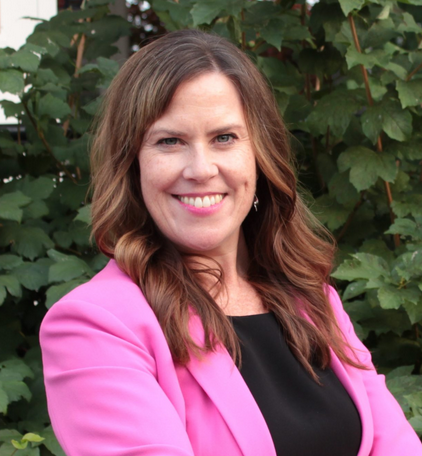 Burlington Ontario Health Team Executive Director Kathy Peters. Peters has been with the BOHT since its inception in 2019 when she was Director, System Collaboration and Partnerships, Kathy has successfully led the co-design, planning and implementation of collaborative health and social care programs and services, digital health initiatives, and population health management planning and evaluation. Under her direction, new integrated care models and programs have been introduced to support seniors care, mental health and addictions, remote care management, and system navigation to support the Burlington community and surrounding areas.
Kathy’s commitment to health equity has supported the development and implementation of a Patient, Family, Community Advisory Strategy focused on principles of equity, diversity, inclusion, and anti-racism. She oversaw the establishment of the BOHT’s Community Wellness Council comprised of Patient, Family, Caregiver Advisors that serves as an advisory council to the BOHT Steering Committee.
“On behalf of the BOHT Steering Committee, it’s a pleasure to welcome Kathy to her new position,” says Eric Vandewall, Co-Chair of the BOHT Steering Committee and President and CEO of Joseph Brant Hospital. “Kathy has consistently demonstrated the leadership, skills, and resourcefulness to effectively manage an ever-changing health system environment, and inspire committed engagement among diverse communities, member and collaborator organizations, health professionals, community representatives, and staff. With her personable style, she has established strong working relationships that will help advance the BOHT into the future. We commend Kathy on her accomplishments and look forward to her continued success in her new role.”
As Executive Director, Kathy will provide essential leadership in advancing the organization’s strategic direction, culture, and stakeholder relationships. Responsibilities include the fulfillment of the BOHT mission, vision, and strategic plan, and serving as the lead management staff member for the soon to be incorporated BOHT.
After beginning her career as an Occupational Therapist, Kathy quickly advanced to leadership roles including the Hamilton, Niagara, Haldimand, Brant (HNHB) LHIN Strategic Lead of Behavioural Supports Ontario, and HNHB LHIN Director, Planning and Integration. As a believer in continuous life-long learning, Kathy later completed a Masters of Business Administration at McMaster University’s DeGroote School of Business.
What surprised the Gazette was the size of the network; it is a collaboration of 36 health and social service providers who work together to provide integrated services and supports to meet the healthcare needs of residents in Burlington and surrounding communities.
As one of the first Ontario Health Teams that the Government of Ontario announced in 2019, the BOHT’s goal is to improve timely access to care, integrate service delivery with a focus on disease prevention and early identification, and ensure clients have seamless transitions among healthcare and social service providers. At the centre of this new model of care is the patient-primary care provider, the most enduring relationship established within the healthcare system.
Burlington Ontario Health Team Members
1. Acclaim Health and Community Care Services
2. Alzheimer Society of Brant, Haldimand Norfolk, Hamilton Halton
3. Burlington Family Health Team
4. Carpenter Hospice
5. Songbird Medical(formerly Fairview Medical FHO)
6. Burlington Family Health Organization
7. Halton Region
8. Home & Community Care Support Services (Former HNHB LHIN)
9. Joseph Brant Hospital
10. North Burlington Medical Centre Family Health Group
11. Thrive Group (AbleLiving Services Inc., Capability Support Services Inc., Ste. Peter’s Care Centres, Idlewyld Manor)
Burlington Ontario Health Team Collaborating Organizations and Networks
1. Adapt
2. Aldershot Family Health Organization
3. Billings Court Manor
4. Burlington & Area Midwives Inc.
5. Caroline Family Health Organization
6. Caroline Family Health Team
7. CAMA Woodlands Long Term Care Home
8. Central Burlington Family Health Organization
9. CMHA Halton
10. Central West Specialized Developmental Services
11. Dr. Sunita Goel, Primary Care Physician
12. Epilepsy South Central Ontario
13. French Language Health Planning Entity for Waterloo Wellington
14. Hamilton Niagara Haldimand Brant
15. Halton Developmental Services Planning Table
16. Halton Region Police Service
17. Hampton Terrace Long-Term Care Home
18. March of Dimes – Burlington Branch
19. Mount Nemo Christian Nursing Home
20. Positive Space Network
21. Reach Out Centre for Kids (ROCK)
22. St. Joseph’s Seniors Mental Health Outreach Program
23. Stride
24. Summit Housing & Outreach Programs
25. Support House

 By Pepper Parr By Pepper Parr
May 21st, 2023
BURLINGTON, ON
It sort of crept up on us.
There was the sense that the pandemic was over and the virus had been tamed and life would get back to normal.
Normal is going to be our having to be constantly vigilant.
The data from the Regional Medical Officer of Health (MOH) tells the story. And these are the reported cases. That line on the right of the bar graph is where we are.
If you want to check the data from time to time here is a link:
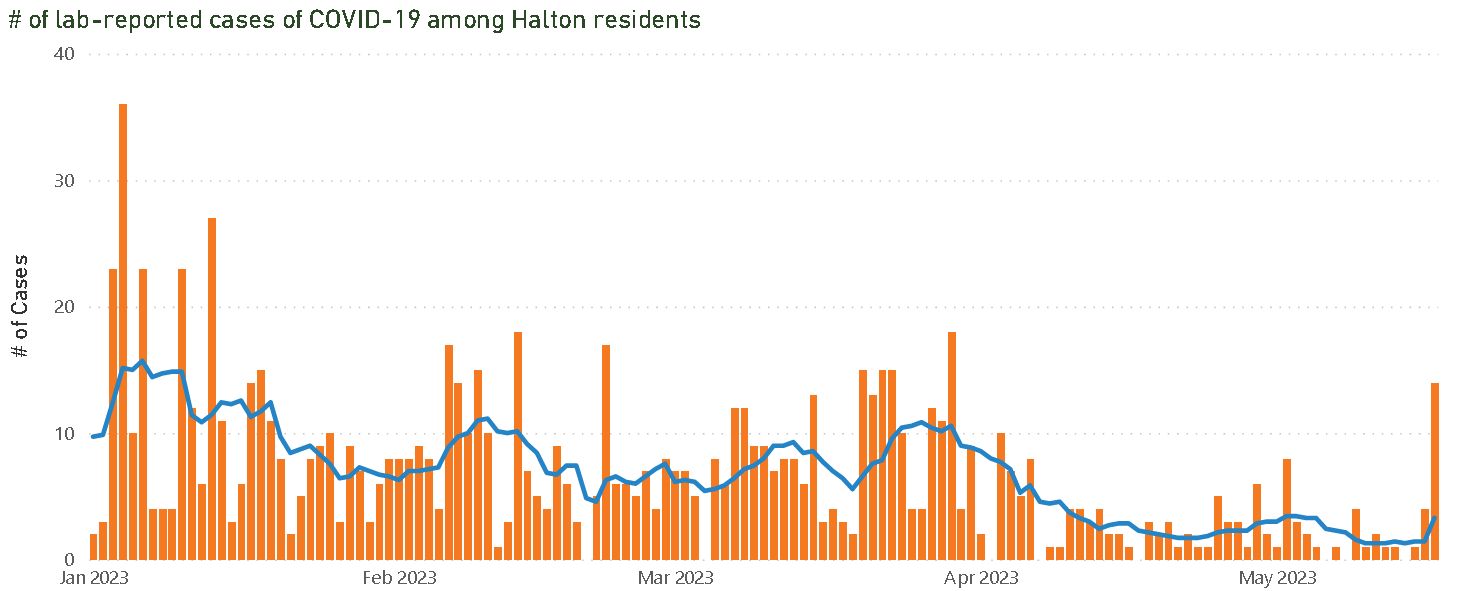 The situation we are in is shown on the far right. 
 By Staff By Staff
May 19th, 2023
BURLINGTON, ON
The Joseph Brant Hospital (JBH) has transformed a courtyard outside its Mental Health and Addictions Unit into a healing garden to improve the care experience for patients.
The project was a collaborative effort by the hospital’s clinical and redevelopment teams, and JBH’s Mental Health and Addictions Patient Family Advisory Council (MHA PFAC).
“We believe the garden allows us to provide an enhanced level of person-centred care. We always strive to meet the care needs each person on an individual level,” said Jack Mahoney, a Recreational Therapist who works in the inpatient unit.
“Having the garden available to our patient population allows us to tap into this set of interests in a meaningful way. In the process of empowering the population we serve; the garden provides an opportunity for a sense of autonomy among our clients pertaining the space they occupy.”
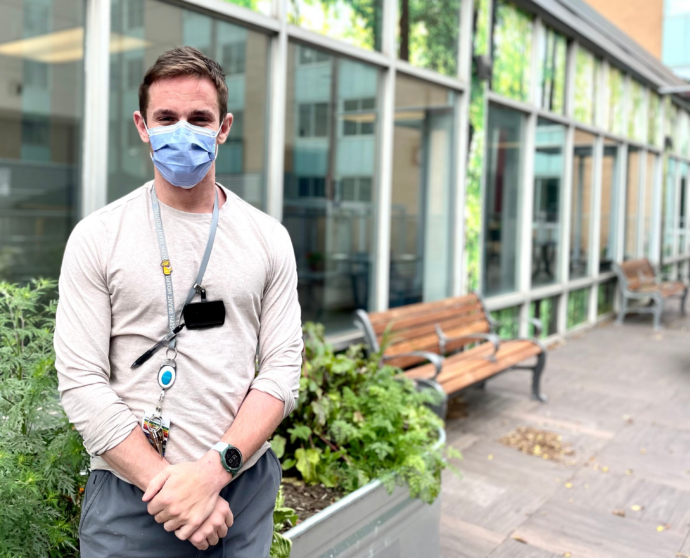 Jack Mahony: Recreational Therapist who works in Joseph Brant Hospital’s Mental Health and Addictions inpatient unit. The new healing gardens creates an environment that promotes wellness and provides patients with an opportunity to engage in goal-oriented activities. Last summer patients grew tomatoes, zucchinis, radishes, chard, marigolds, kale, chives and cabbages. The space also features a gazebo with seating for relaxation and socializing, a calming water feature and benches, as well as plants that are indigenous to the area.
The MHA PFAC, an advisory council that was established in keeping with JBH’s commitment to patient and family engagement, made the recommendation to build the garden as part of its role to enhance patient-centred care at the hospital.
“The recent project to convert the courtyard into a healing garden is a great example of volunteers and hospital staff working together,” said John Reynolds, Chair of the MHA PFAC. “We felt it was vital to the recovery of patients to have access a natural setting and the message of hope it provides.”
Joseph Brant Hospital’s Mental Health Services program provides a Full-Continuum Model of Care, planned and designed according to needs of the patients in our community and in alignment with provincial and regional mental health priorities and directives.

 By Milorad Radak By Milorad Radak
May 17th, 2023
BURLINGTON, ON
DUI refers to any offence related to driving under the influence, be it from alcohol, drugs or anything that impairs judgment and dexterity.
If you have been charged with DUI in the U.S., this can make entering Canada difficult even if your conviction was expunged or sealed. There may be ways around this however; including applying for Criminal Rehabilitation and getting a Temporary Resident Permit.
DUI arrest in details can be complicated and there are many potential consequences for those who are convicted. It is important to understand your rights and the consequences of a DUI charge in order to make informed decisions about your case.
What is a DUI Arrest?
 The RCMP can pull you over and ask you to step out of the car and ask you to walk a straight line. If they are not satisfied they can issue you a ticket or call a tow truck and put your car in a car pound. DUI (driving under the influence) arrest is an offense in Canada and conviction will result in criminal records, fines and jail time – in some cases even your driver’s license could be suspended or even cancelled.
Criminal convictions can make entering Canada challenging, even if you have since made amends and committed no further offenses. Canada takes DUIs or driving under the influence offences seriously and often deny entry to foreign nationals who have had such convictions in their past.
At Canada Border Services Agency (CBSA), any conviction of DUI, DWI, OWI, or DWAI on your record – regardless of when it occurred – can prevent entry to Canada despite being admissible. An experienced admissibility lawyer can help those individuals obtain either a Temporary Resident Permit or Criminal Rehabilitation to gain entry.
What Happens During a DUI Arrest?
DUI (driving under the influence) in Canada is an extremely serious crime that may lead to jail time or other severe penalties, including fatalities and injuries every year from impaired drivers. Border agents recognize this problem and often inquire if US citizens have been arrested or convicted for drunk driving in the past year or so. When answering such inquiries honestly is key – being dishonest will only aggravate matters further.
DUIs and similar charges can take various forms, including DWI, OUI, OWI or DWAI charges in Canada. No matter their name or classification, DUI is often an offence which renders an American inadmissible due to criminal considerations.
 Police in Canada are very strict about DUI driving. Scenes like this are very frequent, especially during holiday weekends. Royal Canadian Mounted Police or RCMP can detect DUI arrests and convictions from American records, even if the arrest or conviction took place years ago. They can look back as far as 40 years to see what crimes have been committed.
What Are the Penalties for a DUI Arrest?
DUI penalties in Canada can be severe; indeed, they often make entry difficult if there’s been an arrest for this offence. Border officials have complete discretion in their decision about granting entry based on how old the conviction is and can make their decision depending on how old it is.
As long as your DUI offence occurred more than 10 years ago, it is possible to enter the country with one. You will need either to secure a Temporary Resident Permit or be found Criminally Rehabilitated before entering. Since this can be a lengthy process, having a professional lawyer guide you is highly recommended.
 Failure to do the breathalizer test will mean immediate arrest and the impounding of you vehicle. Canadian courts will impose both fines and jail sentences upon repeat offenders who cause no injuries; even first time offenders who cause no physical damage could face imprisonment if circumstances escalated further. You could lose your driving privileges and may need to install an interlock device after conviction.
What Can I Do After a DUI Arrest?
Many Americans may be shocked to learn that even minor DUI offences such as traffic tickets can prevent entry to Canada despite having been misdemeanours, since Canadian laws define DUI as “dangerous operation”, not simply alcohol or drug intoxication. This means someone could be stopped at the border even if they do not intend to drive; similarly civil DUI infractions like DWAI or OWI may prevent entry as well.
Criminal Rehabilitation can also prevent admittance into Canada. Although there are ways around this restriction, such as applying for a Temporary Resident Permit or Criminal Rehabilitation permit, both are time consuming processes which require advance planning in order to be successful. It is advisable that legal representation handle these processes from start to finish to meet all their stringent requirements successfully.

 By Pepper Parr By Pepper Parr
May 18th, 2023
BURLINGTON, ON
The Joseph Brant Hospital Board of Directors had sent the City Clerk a notice setting out governance changes the hospital Board had made that they wanted the city to endorse.
In a written notice to the City Clerk they asked:
THAT Council for the City of Burlington endorse the Joseph Brant Hospital Board of Directors decision to discontinue the Municipal Representative seat on the Hospital Board and THAT the Hospital commits to continuing its engagement and ongoing positive relationship with the City of Burlington.
That was the piece of business before a Council Standing Committee that then proceeded to squabble for more than an hour on how the they should respond and what they should do to ensure that as a Council they had some control and perhaps leverage when dealing with hospital matters.
To fully understand how the conversation you need to understand that every member of Council is also a Deputy Mayor with a specific portfolio. There is an additional kind of Deputy Mayor as well – in place to serve when the real Mayor is not available for Ceremonial events. Confusing – you bet it is.
Barbara Elliott board vice chair Joseph Brant Hospital was available to answer any questions members of Council might have had about the changes the hospital made and they endorsement they were seeking.
 City Council was not happy with the report the hospital sent to the City Clerk. They wanted quite a bit more input and influence than the hospital was suggesting. However, Council didn’t want that input and influence to be all that public. With the report in front of them Committee Chair Galbraith then asked: “ Are there any questions for Barbara or for staff? Seeing none, he asked: “will a member like to move this item?
Councillor Sharman moved the report, which was before Council as a Read and File
“Are there any comments? Asked the Chair
Councillor Kearns: “I’d like to table the amendment that I’ve circulated to the Clerk.
 And that is when the meeting got interesting. Council appears to have decided that they would have to go along with what the hospital board wanted but they were going to put in place a series of required meetings that would allow council to stay close to the Hospital board and be able to have both input and influence. And that is when the meeting got interesting. Council appears to have decided that they would have to go along with what the hospital board wanted but they were going to put in place a series of required meetings that would allow council to stay close to the Hospital board and be able to have both input and influence.
The single annual meeting, which the hospital suggested, was not what this council had in mind.
Getting to the point where they had a response the hospital request was torturous.
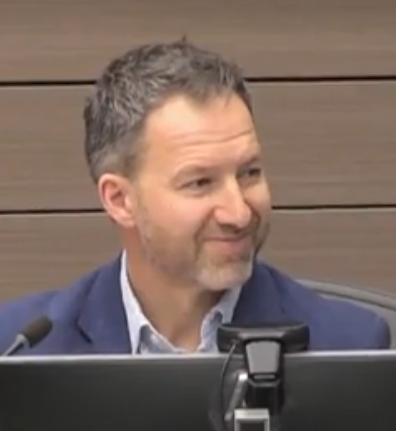 Councillor Kelvin Galbraith: Chaired the meeting. Would you like to read that amendment into the record Councillor Kearns asked Chair Galbraith?
The amendment was:
To direct the office of the mayor to conduct, on a biannual basis, a joint meeting with the hospital board Chair, Vice Chair and CEO with the Mayor and the Deputy Mayor of Recreation and Community culture to discuss any pertinent matters; Angelo Bentivegna is the Deputy Mayor for Recreation Community and Culture.
 Ward 2 Councillor Lisa Kearns put an amendment on the table and did her best to ensure that it didn’t get too watered down. “The rationale behind this is” said Kearns, “about opportunity to discuss pertinent matters outside of the cycle of reporting into Council.
“I view this as a transitional approach to the change. The ex officio seat on the hospital board which Mayor Meed Ward served on when she was a Council member; the position has also been held by myself, and Councillors Sharman and Bentivegna, who is the current council representative.
“We should keep the conversation going while still recognizing the efforts in good governance that the board has brought forward to us by way of this report.
Chair: There are a couple of questions coming. We’ll start with Councillor Sharman who said: I really appreciate the amendment. Might I make a suggestion that includes the mayor and council. The reason I’d say that is because every single one of us, as deputy mayors have a significant interest in what’s going on.
“And as we move into the stage of growing the community substantially over the next 20 to 30 years we need to make sure our community is looked at it from a healthcare perspective. And I think we have a significant reason to want to talk to them in general.”
 Councillor Bentivegna; He is the current city representative on the hospital board – that was about to come to an end. Councillor Bentivegna pointed out that there was a time when the Joseph Brant Foundation and the Hospital Auxiliary were on the Board.
In determining what they would set up as a meeting structure Council had to ensure that it was not bumping up against the number of councillors taking part – more than three would constitute a quorum (that would be four members) which would make it a public meeting – which wasn’t what this council wanted to see taking place.
Kearns in her usual zippy use of language said: We can meet up to three without busting quorum.
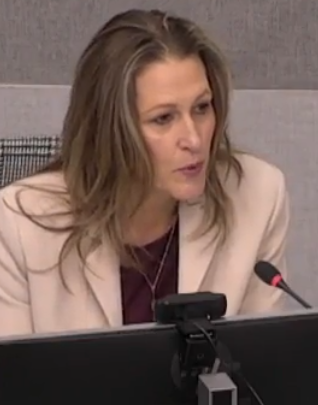 Mayor Meed Ward at one point said she was not going to support an amendment – it would damage her reputation. Mayor Meed Ward added: “We could modify this amendment to have a biannual meeting and make sure that the Mayor and the Deputy Mayor for Recreation Community and Culture and whoever the deputy mayor is for ceremonial be invited to that meeting; that might be a way to thread the needle and I would offer that language then as an amendment to the amendment.
Chair Galbraith: I actually do like the mayor’s amendment. I have the hospital in my ward and I certainly deal with a handful of situations; resident issues surrounding the hospital, and I don’t really have that sort of conduit to communicate with the hospital – I’m definitely open to being included in in a couple of meetings a year.
Kearns: Happy to support a friendly amendment that includes and ceremonial and that would give everyone a turn at an appropriate time while maintaining the consistency of one be the mayor as well as the mayor. So if everyone’s fine with that, as well as the hospital of course I’m happy to move this forward.
Sherman. “I’ve been thinking about the need for everybody to be there all the time. I actually believe that the healthcare system is changing so dramatically and will have such a profound effect on our community over the next 30 years. That we need to take a leadership role on this as well.
“I would I would suggest that the mayor be there and invite others as necessary. And if she needs a Clerk there, she can get a Clerk there. That would be my suggestion.
Meed Ward: “I’m very interested to hear from the Clerk about what we might be able to do. My sense is that if there is a full counsel present, then those meetings are, would have to be constituted in a very formal manner and public and recorded and all of that and it notwithstanding a Clerk being present, I don’t know that we can have the same kind of dialogue.
“So we’re talking kind of about two separate things, one that’s kind of a touch base meeting which is not a Council meeting and then there’s the twice a year touch base meeting that includes all of Council.”
 City Clerk Kevin Arjoon Clerk: The response to your question, Mayor, through the Chair. Yeah, if there is a majority of council at a meeting, it would constitute a council meeting.
Mayor: Maybe we could refer this to legal counsel and have the clerk work on some language. Think it through. In general I’m okay with the idea. I just think it needs some improvement.
Kearns.”So this should be very simple – it is before you right now. Everyone has the opportunity to reach out to the hospital for their own interests or concerns. These are high level conversations around any pertinent matters. If anyone has a project or customer based or logistics operations they can be supported directly with the help of the CEO or patient services. They have always maintained a very strong open line of communication. I see this as a transition and I’m looking for some additional oversight.”
It didn’t get any better. It looked as if they were going to be able to settle it and move on.
Kearns: It’s all very simple.
Chair: I’m happy to take the vote at any time and if it fails, we can look at it again at Council
They weren’t there yet
Mayor Meed Ward: “So the only way today, if we want to try to get closer to consensus is, that it’s the mayor, the deputy mayor and then one additional member of council to be determined based on the needs that are being discussed at the time.”
 Kearns: “I can modify it once again.” Kearns: “I can modify it once again.”
Direct the office of the mayor to conduct a biannual basis on a biannual basis a joint meeting with the JBH, Board Chair, Vice Chair and CEO with the mayor and the Deputy Mayor of recreation and community culture, and the ceremonial deputy mayor and any additional council members depending on topics to discuss any pertinent matters.
Chair asks: “Is that how you wanted it to read Councillor Kearns?”
Kearns: “I think Mayor Meed Ward wants to change it actually.”
Meed Ward: “Okay, so I won’t be supporting not getting a ceremonial deputy mayor because that allows for equity and rotation which was the point in the first place. So dropping that and just making pointed members based on topics will squeeze out anyone that may not have an opportunity otherwise.
“I’m not interested in putting my reputation on the line to violate the municipal act and closed door meetings and open meetings.”
City Clerk Yeah, I think passing an amendment is great
Kearns: I think this might help bring us closer to consensus. We can all agree that it was very important that you have the opportunity to serve on the hospital board. In light of this governance change that is no longer possible.
 Sharman: “Well, I hate to drag this on. Sharman: “Well, I hate to drag this on. I have the greatest regard for both council members. This is amendment that will last forever. This makes no sense to me. I’m happy that the Deputy Mayor of Recreation Community and Culture be there for the term he would have had, but it makes no sense to be allocating roll into an amendment. So So I would say we’re going to save for the next term or what I it’s, I’m sorry, this is not working for me. The inclusions that roll unless you put it in for the next, you know, to end at the end of 2026. So I just leave that back with you.”
Meed Ward: “If I could just jump in I kind of share that. That concern. I’m not quite sure one person is being signalled out here. I just don’t get it but I sort of had the same concern. So pass that back to you Councillor Kearns.”
Kearns: Thanks, happy to put it to 2026. Also note we have a massive review of agencies, boards, commissions and all functions in and around those coming up. So anything on the table can change at that time. With our agencies, boards and commissions are in perpetuity, apart for the sake of speeding this along, I’m happy to include for this term.
Meed Ward: “ I support that too. To have a term limited and I would just suggest the Clerk make it clear that it’s so after the Deputy Mayor of Recreation, Community and Culture for the balance of the 22 to 2026 term.
“I’m looking around the room and I think we’re all nodding so we may well have landed this awesome.”
Chair: So now to call the vote on item 4.1, as amended regarding amendments to the Joseph brand hospital administrative bylaws.
Sharman: ” We had talked about whether or not we wanted an official briefing in public session during a council meeting twice a year or once a year. I’m open to either but we would need another amendment for that if council wants to have two briefings in council setting for the public So if no one feels the need for twice a year formally in council, then we can just leave it and carry on. And I’m not tabling that because I’m not I’m not seeing hands.
Chair. Seeing no further comments. I will now call the vote for item 4.1 Regarding amendments to Joseph Brant Hospital administrative bylaws
 Making sure she controlled as much as she could Councillor Kearns said:”My apologies chair. I got caught up in amendment discussion and forgot that I did have comments on the overall piece which I will make now. Kearns:”My apologies chair. I got caught up in amendment discussion and forgot that I did have comments on the overall piece which I will make now.
.
The board has a governance oversight responsibility and absolutely needs to be a skills based board based on the strategic plan and master plan of the hospital at any given time. So I think there is perhaps some additional conversation we can have with the community about the role of the board and the role of Patient Relations and where the city and city council members fit in. So we’ll continue to have those conversations both formally informally and at Council. And I just want to assure the public that nothing is lost in this transition.
Sharman: “But in terms of the relationship between the city and the board we shouldn’t be at that level. We shouldn’t be involved. The hospital is capable of doing that all by itself and it does a wonderful job so I’m not there for that for that, but when it comes to the overall community and how it’s developing, which I think is going to be significant in the next few years. So we have to be involved for in a different way. And that is the way we represent our community into that board. I do have access and I do have conversations already. That’s not my concern. My concern is not me it’s about the city and the community. And that was why I’ve been speaking the way I have but I am satisfied with the outcome.
Chair: Seeing no further comments, I will now call the vote. All those in favour reminder to raise your hands.
After more than an hour of offering amendments to amendments of the recommendation that would go to Council the following was passed with a vote that was unanimous.
Approve the recommendation regarding a recent Ontario Not-for-Profit Corporations Act (ONCA) compliance exercise, and proposed amendments to Joseph Brant Hospital Administrative By-laws; and
Endorse the Joseph Brant Hospital Board of Directors decision to discontinue the Municipal Representative seat on the Joseph Hospital Board; and
Adopt a practice of inviting the Joseph Brant Hospital Board Chair and Chief Executive Officer to annually to a Council meeting to provide updates on the Hospital and its future directions; and
Direct the office of the Mayor to conduct on a bi-annual basis a joint meeting with the JBH Board Chair, Vice Chair and CEO with the Mayor and the Deputy Mayor of Recreation and Community Culture for the balance of the 2022 – 2026 term plus one additional member of council to discuss any pertinent matters.
And – it was done. It is difficult in a written report to appreciate the tension between Councillor Kearns and the Mayor.
What is even more difficult is that when the matter got to council there was not a single word said about telling the public what had changed and why – and what Council had done to keep their finger on the scale to ensure that the hospital didn’t forget that the public, represented by Council needed a voice.

 By Staff By Staff
May 10th, 2023
BURLINGTON, ON
When it came time to finally pass Bill 60, Your Health Act, into law yesterday, Health Minister Sylvia Jones wasn’t in the chamber to answer questions about the bill her government spent months arguing would end the dysfunctional status quo that leaves Ontarians languishing on wait lists for basic surgeries and diagnostic tests.
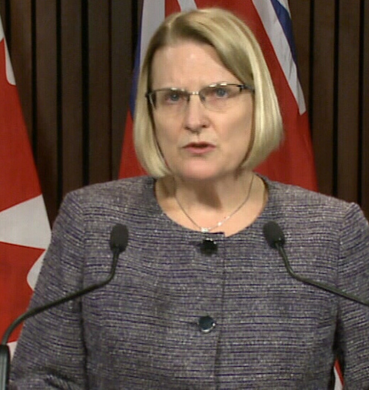 Health Minister Sylvia Jones wasn’t in the chamber to answer questions about the bill her government spent months arguing would end the dysfunctional status quo that leaves Ontarians languishing on wait lists for basic surgeries and diagnostic tests. Jones’ decision to duck questions — in favour of attending a federal funding announcement with Solicitor General Michael Kerzner, where she did not actually speak — prompted suggestions from opposition parties that the PC government wants to put the controversial bill behind them. Its opponents, meanwhile, are vowing to make sure that does not happen.
Jones returned to the house at the tail-end of question period, in time for the third reading vote and just in time to answer the very last question of the morning.
“Bill 60 will actually improve community and surgical centres in the province of Ontario. Why? Because we don’t want people having to wait an inordinate amount of time for their surgeries,” Jones insisted.
After voting on the bill, Jones was gone again, dodging questions from reporters at Queen’s Park.
She didn’t have time, the government said, because she was giving a keynote speech to the Federation of Northern Municipalities.
Opposition leaders suggested the minister’s manoeuvring indicates the government is not feeling as confident about the legislation as it has previously professed.
“After the vote today, even their applause was lukewarm,” noted NDP Leader Marit Stiles.
“I don’t think that this government is really interested in engaging with or responding today,” said Liberal Health critic Adil Shamji. “The minister of health’s conduct is extraordinarily emblematic of the conduct of this government as a whole.”
 They are looking for more than 1 million referendum. votes – be one of them. This matters A Bill 124 redux
Opponents say they will not let the PCs turn the page on the controversial legislation — echoing the way in which Bill 124 has dogged the government since its passage in 2019, before being struck down late last year.
“We will fight this legislation until the end, even if it means through to the next election, because this is a pivotal moment in Ontario’s history for its public health-care system,” said CUPE Ontario regional vice-president David Hurley during a press conference at Queen’s Park ahead of the final vote.
Ontario Health Coalition executive director Natalie Mehra said her group will start its pushback with a “formal complaint” to the federal government or possibly “legal action,” arguing the province is already violating the Canada Health Act by not preventing existing clinics from charging Ontarians illegal fees for OHIP-covered services — which the PCs deny is happening.
Mehra told Queen’s Park Today her organization may go to court to seek a writ of mandamus, which is an order requiring the government to perform a duty owed to the public. In this case, that would be enforcing the Canada Health Act’s provisions against charging people for medically necessary care.
 The Mayor and the Minister at a meeting of the Ontario Big Mayors Group. Meed Ward is on the left with the Minister almost opposite her. Bonnie Crombie, Mayor of Mississauga (and the next Liberal leader if I have it right) is next to Marianne The coalition and its allies are also organizing an unofficial “referendum” on Bill 60, with thousands of volunteers set to begin canvassing Ontarians across the province to cast a ballot answering the question: “Do you want our public hospital services to be privatized to for-profit hospitals and clinics?”
The effort will involve 1,000 voting stations collecting ballots on May 26 and 27. Organizers are aiming to get one million people to participate, a level of engagement they believe will make the poll too politically damaging to ignore.
“We have held tens of thousands of volunteers out in front of grocery stores, coffee shops, legions, union halls [and] faith-based organizations asking Ontarians to vote,” said Mehra. “If you are a private clinic owner in Ontario and think you’re going to set up shop here and charge OHIP and patients on top of that, you have another thing coming.”
Oppo warns investors not to set up shop
Opposition parties warned potential clinic owners and investors to save their money because the new system being put in place will not outlast the PC government.
 NDP Leader Marit Stiles. “It’s not over yet. We are going to continue this fight,” said Stiles, noting that provinces such as British Columbia and Quebec are already backing away from their own private clinic experiments due to the high cost of such clinics and their impact on the public system.
“I will say to those people who are thinking of investing in for-profit clinics: listen up, there’s going to be another government elected here in three years,” Stiles added.
“Is it a great investment? Probably not,” agreed Liberal Leader John Fraser.

|
|
 By Pepper Parr
By Pepper Parr





 There are other community organizations that deliver services to the community at no cost. The work done by Bfast has resulted in transit services that meet the needs of that part of the population that depends on public transit.
There are other community organizations that deliver services to the community at no cost. The work done by Bfast has resulted in transit services that meet the needs of that part of the population that depends on public transit.



















 By Maria Gregory
By Maria Gregory 




 By Staff
By Staff


 The groundbreaking AI software, developed by Dr. Darren Burke and his team of experts, leverages the power of artificial intelligence, natural language processing (NLP), and machine learning to simulate complex clinical trials scenarios. Phase one developed for athletes, uses human physiological responses to predict how exercise interventions and supplement formulations would impact muscle strength, exercise recovery, hormone levels, weight loss and many more important variables.
The groundbreaking AI software, developed by Dr. Darren Burke and his team of experts, leverages the power of artificial intelligence, natural language processing (NLP), and machine learning to simulate complex clinical trials scenarios. Phase one developed for athletes, uses human physiological responses to predict how exercise interventions and supplement formulations would impact muscle strength, exercise recovery, hormone levels, weight loss and many more important variables.





 The holidays are a joyful time for many of us. Food is often a cherished part of the season — cooking and baking from family recipes and sharing it with loved ones.
The holidays are a joyful time for many of us. Food is often a cherished part of the season — cooking and baking from family recipes and sharing it with loved ones.









 Councillor Bentivegna asked the Deputy Chief: “Is there something that you can share with residents throughout the region of things that as neighbours we could be doing. Are there signs out there that you can share that say hey, you know, this doesn’t look right. I don’t know whether we should approach the individual or maybe make a call to halt and say, you know, here’s what I’ve seen, or are there clues out there?
Councillor Bentivegna asked the Deputy Chief: “Is there something that you can share with residents throughout the region of things that as neighbours we could be doing. Are there signs out there that you can share that say hey, you know, this doesn’t look right. I don’t know whether we should approach the individual or maybe make a call to halt and say, you know, here’s what I’ve seen, or are there clues out there?





























